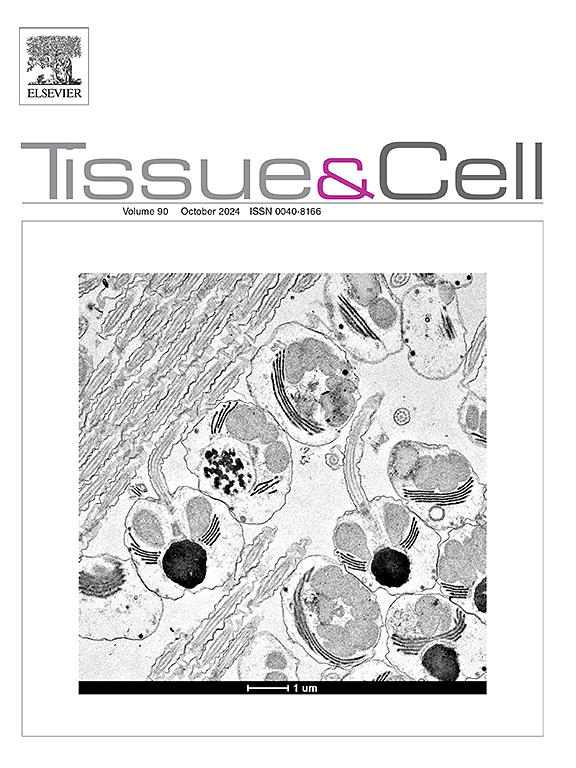神经组织工程功能生物材料的3D生物打印研究进展
IF 2.7
4区 生物学
Q1 ANATOMY & MORPHOLOGY
引用次数: 0
摘要
生物3D打印已经成为神经组织工程中的一项变革性技术,能够精确制造复杂的仿生支架,以解决神经修复中的挑战。本文综述了生物3D打印技术的最新进展,重点介绍了其与功能性生物材料的结合,以增强神经再生。我们系统地分析了关键技术方面,包括喷墨、挤压和激光辅助打印模式,强调了它们在构建具有定制机械性能和生物活性的神经引导支架方面的能力。功能性生物材料,如天然聚合物(海藻酸盐、明胶)、合成聚合物(PLA、PVA)和生物陶瓷,在促进细胞粘附、分化和神经营养因子传递方面的作用被评估。3D生物打印在周围神经损伤修复、脊髓损伤治疗和神经退行性疾病建模中的应用进行了严格的审查,突出了临床前的成功和转化潜力。讨论了当前的瓶颈,包括打印精度、材料稳定性和临床可扩展性,以及未来的方向,如智能响应材料和人工智能集成生物打印系统。这项工作强调了先进生物材料和3D生物打印之间的协同作用,作为开发个性化神经治疗的有前途的途径。本文章由计算机程序翻译,如有差异,请以英文原文为准。
Advances in 3D bioprinting of functional biomaterials for neural tissue engineering
3D bioprinting has emerged as a transformative technology in neural tissue engineering, enabling the precise fabrication of complex, biomimetic scaffolds to address challenges in neural repair. This review synthesizes recent advancements in 3D bioprinting technologies, focusing on their integration with functional biomaterials to enhance neural regeneration. We systematically analyze key technical aspects, including inkjet, extrusion, and laser - assisted printing modalities, emphasizing their capabilities in constructing neural guidance scaffolds with tailored mechanical properties and bioactivity. Functional biomaterials such as natural polymers (alginate, gelatin), synthetic polymers (PLA, PVA), and bioceramics are evaluated for their roles in promoting cell adhesion, differentiation, and neurotrophic factor delivery. The application of 3D bioprinting in peripheral nerve injury repair, spinal cord injury treatment, and neurodegenerative disease modeling is critically reviewed, highlighting preclinical successes and translational potential. Current bottlenecks, including printing precision, material stability, and clinical scalability, are discussed alongside future directions such as smart responsive materials and AI - integrated bioprinting systems. This work underscores the synergy between advanced biomaterials and 3D bioprinting as a promising avenue for developing personalized neural therapies.
求助全文
通过发布文献求助,成功后即可免费获取论文全文。
去求助
来源期刊

Tissue & cell
医学-解剖学与形态学
CiteScore
3.90
自引率
0.00%
发文量
234
期刊介绍:
Tissue and Cell is devoted to original research on the organization of cells, subcellular and extracellular components at all levels, including the grouping and interrelations of cells in tissues and organs. The journal encourages submission of ultrastructural studies that provide novel insights into structure, function and physiology of cells and tissues, in health and disease. Bioengineering and stem cells studies focused on the description of morphological and/or histological data are also welcomed.
Studies investigating the effect of compounds and/or substances on structure of cells and tissues are generally outside the scope of this journal. For consideration, studies should contain a clear rationale on the use of (a) given substance(s), have a compelling morphological and structural focus and present novel incremental findings from previous literature.
 求助内容:
求助内容: 应助结果提醒方式:
应助结果提醒方式:


